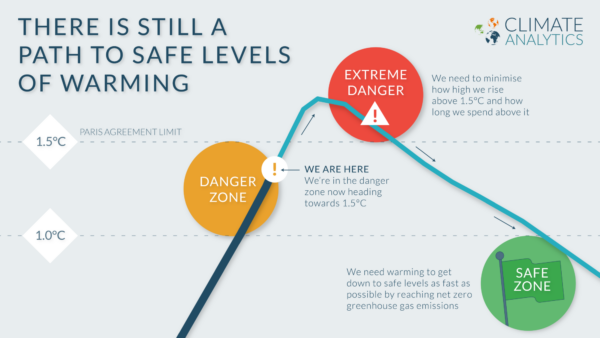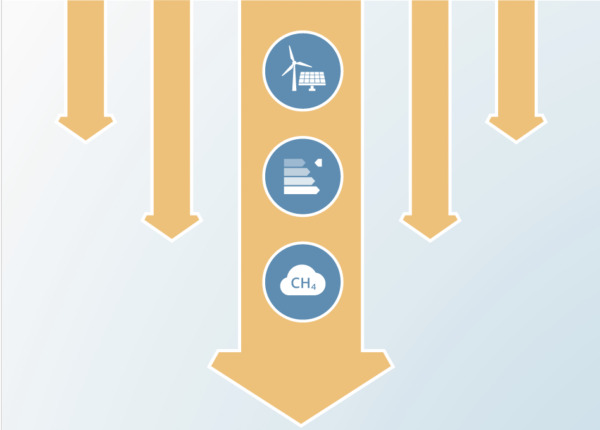Rescuing 1.5°C: new evidence on the highest possible ambition to deliver the Paris Agreement
Authors
Climate Analytics: Dr Neil Grant, Claudio Forner, Marie-Charlotte Geffray, Dr Zarrar Khan, Dr Lara Welder, Dimitris Tsekeris, Bill Hare
PIK: Chris Gong, Fabrice Lécuyer, Jarusch Müßel, Gunnar Luderer
Share

Due to insufficient action in recent years, the world will very likely reach 1.5°C of warming by the early 2030s. This means the world is headed towards a period of overshoot of the Paris Agreement’s 1.5°C limit. This new study shows how to limit the overshoot of 1.5°C to the lowest possible level and return warming back well below 1.5°C by 2100 by looking at the highest possible ambition that could be undertaken by countries, starting in 2025.
The high risks and damages of overshooting 1.5°C have been well established by the scientific community. Policy needs to now focus on limiting both the magnitude and duration of overshoot to bring warming back below 1.5°C before 2100.
Overshooting 1.5°C does not mean we need change the Paris Agreement’s goals, but rather double down on their implementation. 1.5°C was chosen for good reason. Ten years on from Paris, the science is starker than ever – 1.5°C is planetary limit beyond which climate impacts escalate and risk triggering catastrophic tipping points.
Legally, morally and politically, the Paris Agreement’s 1.5°C limit stands. It now acts as a North Star, guiding ambition and action for the world to avoid long-term overshoot of 1.5ºC and the catastrophic impacts this would entail.
Global energy and emissions pathways have been a critical line of evidence to help inform what highest possible ambition could entail. However, the 1.5°C-aligned pathways assessed in the most recent IPCC cycle (AR6) are becoming increasingly outdated. Since their creation five years ago, the world has failed to cut emissions, sending global temperatures racing towards the 1.5°C limit. On the other hand, in the last five years renewable energy and other zero-carbon technologies have decreased substantially in cost and are far more cost-competitive than anticipated and can be scaled up faster.
Our new Highest Possible Ambition scenario updates these pathways, starting from today’s emission levels (2025) and energy market dynamics to achieve the safest possible temperature outcome within physical, technological and economic feasibility limits. It provides an updated evidence base on how to achieve the Paris goal, starting from where we find ourselves in 2025.












